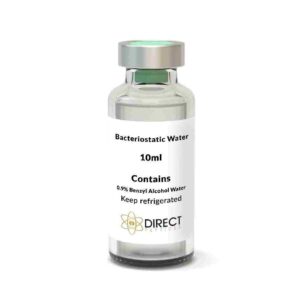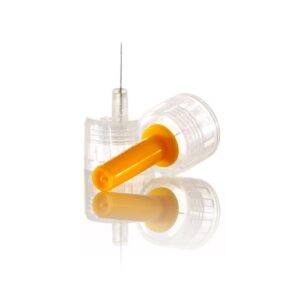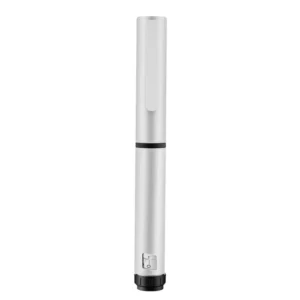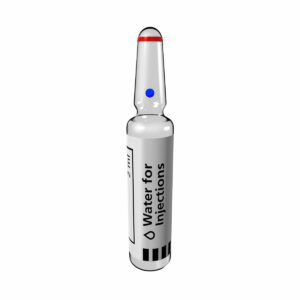Bacteriostatic water vs sterile water both are clear but have different effects on peptide studies. There’s also benzyl alcohol in bacteriostatic water that halts bacteria growth. Each bottle can be used multiple times for up to 28 days.
Sterile water is composed of pure water that is free from any chemicals. You have to use it all and throw it away. Both are used to aid in the work with peptides in laboratories.
Direct Peptides offers global delivery of both bacteriostatic and sterile water, allowing researchers to choose the most suitable option for their peptide work.
Shop ALL Peptide Research Supplies online from Direct Peptides . We have a comprehensive list of premium research supplies including bacteriostatic water, 2ml sterile water, syringes, alcohol wipes, cartridges and pen needle packs for sale. Visit our main supply page and get fast shipping on your order today.
Experiments vary in how they use water for peptide work. Some tests need pure water with no chemicals at all. Other studies allow preservatives and need water that stays clean for weeks.
Multi-dose experiments work better with bacteriostatic water because you can draw from the same bottle many times. Single-dose tests often use sterile water to avoid any chemical interference. Labs must match their water choice to their specific research protocols and safety rules.
Discover Bacteriostatic Water from Direct Peptides , formulated with benzyl alcohol to inhibit bacterial growth and support multi-dose peptide research.
Safety rules help labs pick the right water for their peptide research. Some rules say you cannot use any preservatives in certain tests. Other rules require multi-use water to have antimicrobial protection.
University labs often have strict guidelines about which water types researchers can use. FDA standards also affect water choices for pharmaceutical research.
Bacteriostatic water vs sterile water selection depends on following these safety requirements. Breaking safety rules can ruin research results and waste expensive peptides.
Explore Sterile Water from Direct Peptides , a pure, preservative-free solution ideal for single-use peptide preparation in lab settings.
Research requirements change based on the type of peptide study being done. Clinical trials often need preservative-free sterile water to meet regulatory standards. Basic research labs can usually choose either water type based on their needs.
Long-term studies benefit from bacteriostatic water because it stays clean longer. Short-term experiments might prefer sterile water for maximum purity. Direct Peptides helps researchers understand which water meets their specific study requirements and compliance needs.
Compliance needs ensure research follows proper scientific standards and legal rules. Some regulatory bodies require specific water types for different kinds of studies. Labs must document which water they use and why they picked it.
Using the wrong water can make research results invalid or unusable. Bacteriostatic water vs sterile water compliance depends on understanding these requirements before starting any peptide work. Good compliance protects research quality and helps labs avoid costly mistakes.
Documentation tracks which water type was used in each experiment and why. Labs must record opening dates for bacteriostatic water and disposal dates for sterile water. Research notes should include water lot numbers and expiration dates.
Some studies require proof that the right water type was used throughout the entire experiment. Proper documentation helps labs pass audits and proves their research methods were correct. Missing paperwork can invalidate expensive research work.
Audits verify that labs follow proper water handling procedures during peptide research. Inspectors check storage conditions, labeling systems, and disposal records. They look for proof that bacteriostatic water was discarded after 28 days.
Auditors also verify that sterile water was used immediately after opening. Bacteriostatic water vs sterile water audit trails must show proper selection and handling. Direct Peptides provides documentation that helps labs meet audit requirements and maintain research quality.
Quality control steps ensure water stays pure and safe throughout storage and use. Labs test pH levels regularly to make sure water stays neutral. Temperature monitoring prevents heat damage during storage.
Visual inspections check for cloudiness or particles that signal contamination. Proper quality control catches problems before they can hurt expensive peptides. These steps work for both water types but require different timing and methods.
Contamination spreads through airborne bacteria, dirty needles, and poor handling practices. Each needle puncture creates a chance for germs to enter water vials. Shared work surfaces can transfer bacteria between different water bottles.
Poor hand hygiene also spreads contamination from person to person. Bacteriostatic water vs sterile water both face these risks, but preservatives help protect bacteriostatic water. Understanding contamination paths helps labs create better prevention strategies.
Prevention strategies stop contamination before it can ruin peptide research. Always use fresh, sterile needles for each water draw. Clean vial tops with alcohol before inserting needles.
Store water bottles in clean, dust-free areas away from other lab materials. Label all bottles with opening dates and disposal deadlines. Direct Peptides recommends these simple steps to protect water quality and ensure reliable research results in all peptide studies.
Choose bacteriostatic water for multi-use applications and sterile water for single-use purity needs. Store both types at room temperature away from light and heat. Follow your lab’s specific safety rules and documentation requirements.
Use proper handling techniques to prevent contamination. Keep detailed records of water use for audit purposes. These guidelines help ensure reliable peptide research results while maintaining compliance with safety standards and research protocols.
1 Hu J, Kyad A, Burke K, Sakiyama L, Moraes De Souza C, Pope S, Blue L, Cohen D, Semin D, Goudar C. Critical Aspects of pH Measurement for Bacteriostatic Water for Injection. J Pharm Sci. 2023 Aug;112(8):2307-2310.
2 Lee N, Gao Y, Mårtensson LB, Callaway L, Barnett B, Kildea S. Sterile water injections for relief of labour pain (the SATURN trial): study protocol for a randomised controlled trial. Trials. 2022 Feb 16;23(1):155.

TWIN PACKS
Bacteriostatic Water
£5.49 – £26.98Price range: £5.49 through £26.98 Select options This product has multiple variants. The options may be chosen on the product page
Pen Needle Pack (for cartridge pen)
£15.99 Add to cart
Deluxe Pen and Cartridge
£23.99 Add to cart
2ml Sterile Water
£1.20 – £8.99Price range: £1.20 through £8.99 Select options This product has multiple variants. The options may be chosen on the product pageALL CONTENT AND PRODUCT INFORMATION AVAILABLE ON THIS WEBSITE IS FOR EDUCATIONAL PURPOSES ONLY.
DISCLAIMER: These products are intended solely as a research chemical only. This classification allows for their use only for research development and laboratory studies. The information available on our Direct Peptides website: https://direct-peptides.com is provided for educational purposes only. These products are not for human or animal use or consumption in any manner. Handling of these products should be limited to suitably qualified professionals. They are not to be classified as a drug, food, cosmetic, or medicinal product and must not be mislabelled or used as such.